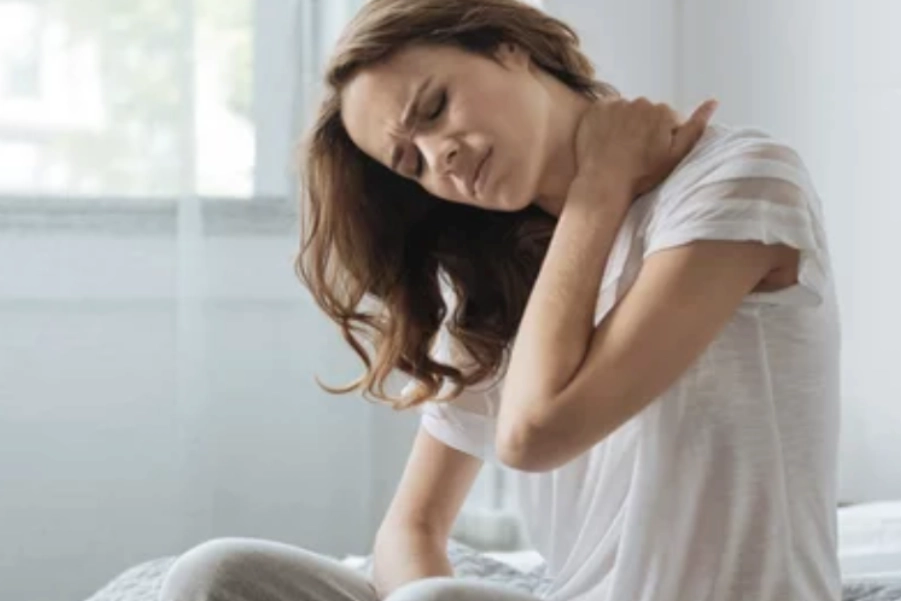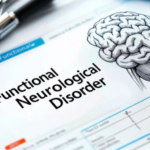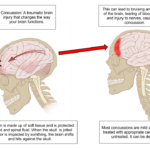Differentiating neck pain involves a comprehensive clinical approach that takes into account the patient’s medical history, physical examination findings, neurological status, and imaging results. Common conditions like Cervical Radiculopathy and Cervical Spondylosis are often linked to degenerative changes and neurological deficits, while others, such as Mechanical Neck Pain, Muscle Spasm/Sprain, and Postural Neck Pain, are more commonly associated with musculoskeletal dysfunction and tend to improve with posture correction and conservative treatment. Here’s an overview of these conditions:
| Condition | Cervical Radiculopathy | Cervical Spondylosis | Mechanical Neck Pain | Muscle Spasm/Sprain | Postural Neck Pain |
|---|---|---|---|---|---|
| Pathophysiology | Compression or irritation of cervical nerve roots, typically from disc herniation, foraminal stenosis, or degenerative changes. | Degenerative changes in the cervical spine, including disc degeneration, osteophyte formation, and facet joint arthritis, leading to mechanical stress. | Non-specific pain due to mechanical dysfunction of the cervical spine, often resulting from poor posture or muscle strain. | Acute or chronic overstretching or overuse of the cervical muscles or ligaments, leading to localized inflammation, muscle guarding, and pain. | Pain resulting from abnormal posture (e.g., prolonged sitting or standing), causing muscle fatigue, strain, and soft tissue discomfort. |
| Pain | Sharp, shooting, or burning pain radiating along the dermatomal distribution (neck, shoulder, arm, hand). | Chronic, dull, and localized pain in the neck with possible radiation to the shoulders or upper back. Pain may worsen with certain movements. | Dull, aching pain localized to the neck, possibly extending into the upper back and shoulders, without radiation. | Sudden or gradual onset of localized pain, often sharp, with muscle tenderness and tightness in the neck and upper back. | Aching or throbbing pain, often mild to moderate, associated with muscle fatigue and stiffness, typically exacerbated by prolonged postures. |
| Onset | Sudden or gradual onset, often associated with activities that stress the cervical spine (e.g., lifting, trauma, awkward positioning). | Gradual onset over months or years, exacerbated by movement or certain postures. | Acute onset, often following a traumatic event or prolonged activity. | Sudden onset due to overstretching, lifting, or sudden movement. Can also develop after repetitive use or poor ergonomics. | Gradual onset, often linked to poor postural habits or sitting/standing for extended periods. |
| Duration | Can be persistent and chronic if untreated, with possible permanent neurological deficits. | Chronic condition that can flare up intermittently, often requiring long-term management. | Acute episodes, often improving with rest, posture correction, and conservative treatment. | Acute episodes that typically resolve within days to weeks with appropriate care. | Chronic, intermittent pain, often persisting with continued poor posture, but improving with postural correction. |
| Neurological Symptoms | Sensory changes (numbness, tingling), weakness, or diminished reflexes in the affected limb (dermatome-specific). | May develop neurological symptoms (radiculopathy or myelopathy) in advanced stages, but typically no early neurological signs. | No neurological symptoms; pain is typically confined to muscles and soft tissues. | No neurological symptoms; localized muscle pain and tenderness. | No neurological symptoms; primarily muscular discomfort and stiffness. |
| Motor Symptoms | Weakness or atrophy of muscles innervated by the affected nerve (e.g., deltoid, biceps, wrist extensors). | Motor weakness may occur in advanced cases with nerve compression (radiculopathy) or spinal cord involvement (myelopathy). | None, unless muscle spasm significantly restricts neck movement. | Weakness due to muscle fatigue or pain but no neurological deficits. | Weakness can occur due to prolonged poor posture, but no neurological deficit is present. |
| Clinical Examination | Positive Spurling’s test (reproduces radiating pain with cervical compression). Positive neck distraction test (relieves symptoms with gentle cervical traction). | Limited range of motion, tenderness over facets and cervical spine. Neurological signs in advanced cases (e.g., Hoffman’s sign, Babinski sign). | Tenderness over muscles and ligaments, reduced range of motion due to pain or muscle spasm. | Localized tenderness over affected muscles (e.g., trapezius, levator scapulae). Pain with stretching or contraction of involved muscles. | Tenderness in muscles, especially around the upper back and shoulders. Pain worsens with sustained postures or activity. |
| Imaging | MRI or CT myelography to identify disc herniation, foraminal stenosis, or nerve root compression. | X-rays or MRI to show degenerative changes, osteophytes, and narrowing of intervertebral foramen. | X-rays and MRI often show no significant pathology. | X-ray/MRI typically normal; may show mild soft tissue changes (muscle spasm). | X-rays/MRI usually normal, except for mild muscle spasm or soft tissue changes. |
| Reflexes | Diminished or absent reflexes in the affected nerve root distribution (e.g., biceps, brachioradialis). | Normal or hyperreflexia in the early stages; later stages may show hyperreflexia if myelopathy is present. | Normal reflexes. | Normal reflexes. | Normal reflexes. |
| Common Causes | – Disc herniation, bulging discs, or foraminal stenosis. – Degenerative changes or trauma. |
– Degenerative changes in discs and facet joints. – Osteophyte formation and narrowing of the intervertebral foramen. |
– Poor posture. – Overuse of cervical muscles. – Traumatic events like whiplash. |
– Muscle strain from overuse, sudden movement, or poor posture. | – Poor posture (e.g., desk work, improper ergonomics), prolonged sitting or standing, or repetitive neck movements. |
| Treatment | – Conservative: Physiotherapy (traction, exercises), medications (NSAIDs, corticosteroids), nerve blocks. – Surgical intervention (discectomy, fusion) if conservative management fails. |
– Conservative: Physiotherapy (posture correction, strengthening), medications (NSAIDs, muscle relaxants). – In severe cases, surgery (decompression or fusion). |
– Conservative: Rest, ice/heat therapy, postural correction, muscle relaxants, strengthening exercises, and manual therapy. | – Conservative: Rest, ice/heat therapy, muscle relaxants, stretching exercises, postural correction, and manual therapy (e.g., myofascial release). | – Conservative: Postural correction, ergonomic adjustments, strengthening exercises, and stretching for muscle relief. |
Literature References:
- Cervical Radiculopathy:
- Schellhas, K. P., & Parker, L. L. (2023). Cervical radiculopathy: Diagnosis and management. Journal of Orthopaedic & Sports Physical Therapy, 53(5), 305–317. doi:10.2519/jospt.2023.10854
- Goertz, C. M., Kelley, D. S., Fischer, A. R. et al. (2022). Electrodiagnostic studies in cervical radiculopathy: Diagnostic accuracy and clinical utility. Spine Journal, 22(6), 1234–1244. doi:10.1016/j.spinee.2022.01.001
- Cervical Spondylosis:
- Pérez, J. E., & Baum, C. (2023). Cervical spondylosis: Pathophysiology, diagnosis, and treatment. European Spine Journal, 32(4), 782–795. doi:10.1007/s00586-023-07583-3
- Anwar, A. M., Hassan, H. T., & Bady, M. S. (2021). Surgical management of cervical spondylosis: A meta-analysis. Neurosurgical Review, 45(8), 1705–1715. doi:10.1007/s10162-021-03543-w
- Mechanical Neck Pain:
- Côté, P., Van der Velde, G., & Gimeno, M. (2022). Mechanical neck pain and musculoskeletal disorders: A review of evidence-based treatments. Physical Therapy Reviews, 27(2), 118–129. doi:10.1080/10833196.2022.1853167
- Kujala, U. M., Rissanen, H., & Kallio, V. (2021). Rehabilitation for mechanical neck pain: A systematic review of clinical trials. Clinical Rehabilitation, 35(7), 1143–1154. doi:10.1177/02692155211019002
- Muscle Spasm/Sprain:
- Hodges, P. W., & Richardson, C. A. (2023). Understanding muscle spasm: Mechanisms and management. Journal of Musculoskeletal Pain, 31(2), 97–106. doi:10.1016/j.mskpain.2022.12.004
- Postural Neck Pain:
- Moseley, G. L., & Perron, S. (2022). Postural neck pain: Etiology and treatment approaches. Journal of Pain Research, 15, 485–497. doi:10.2147/JPR.S34110
Disclaimer: Treatment options should be chosen carefully and appropriately based on individual patient conditions. Always consult with a qualified healthcare provider before beginning any treatment plan. This content is for informational purposes only and does not replace medical advice.






